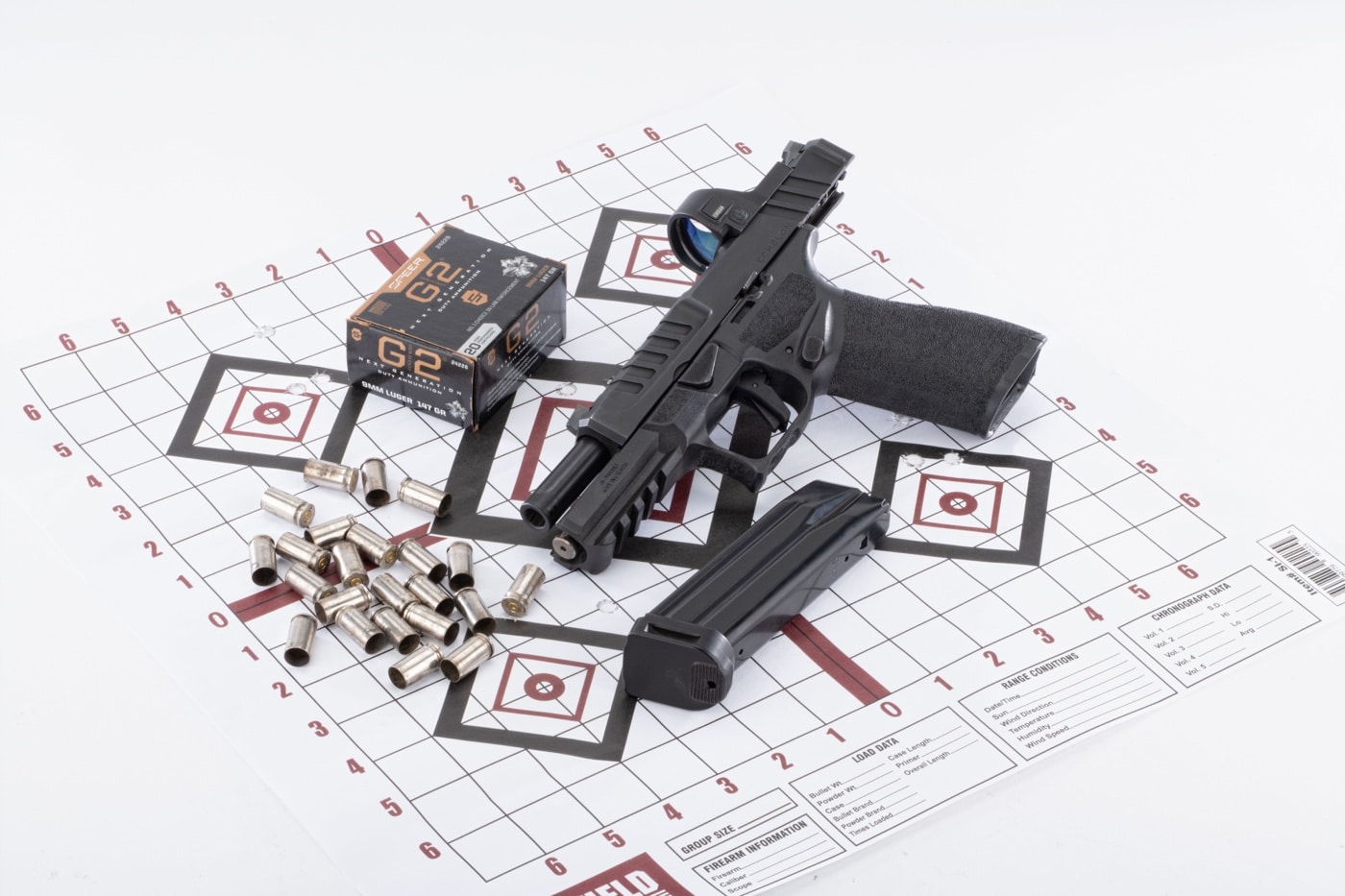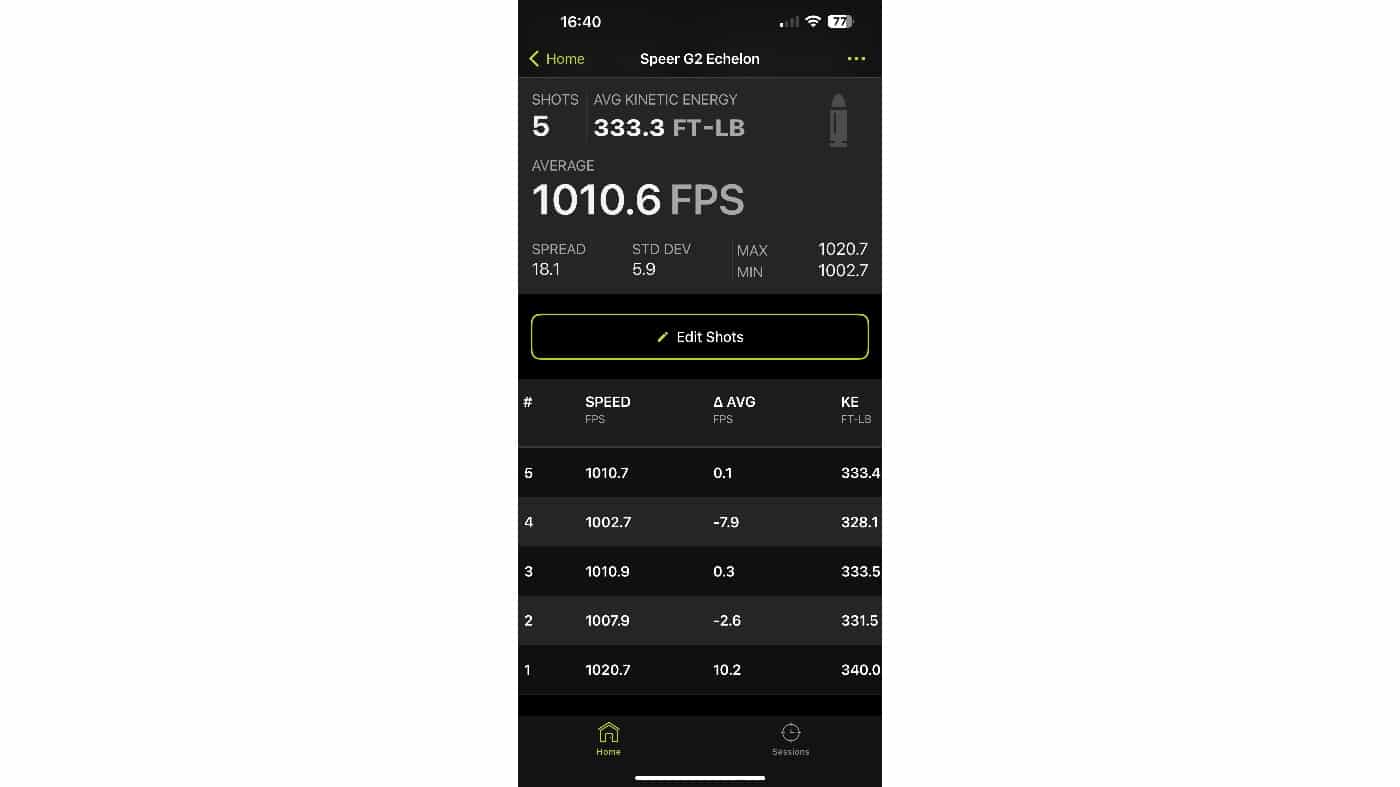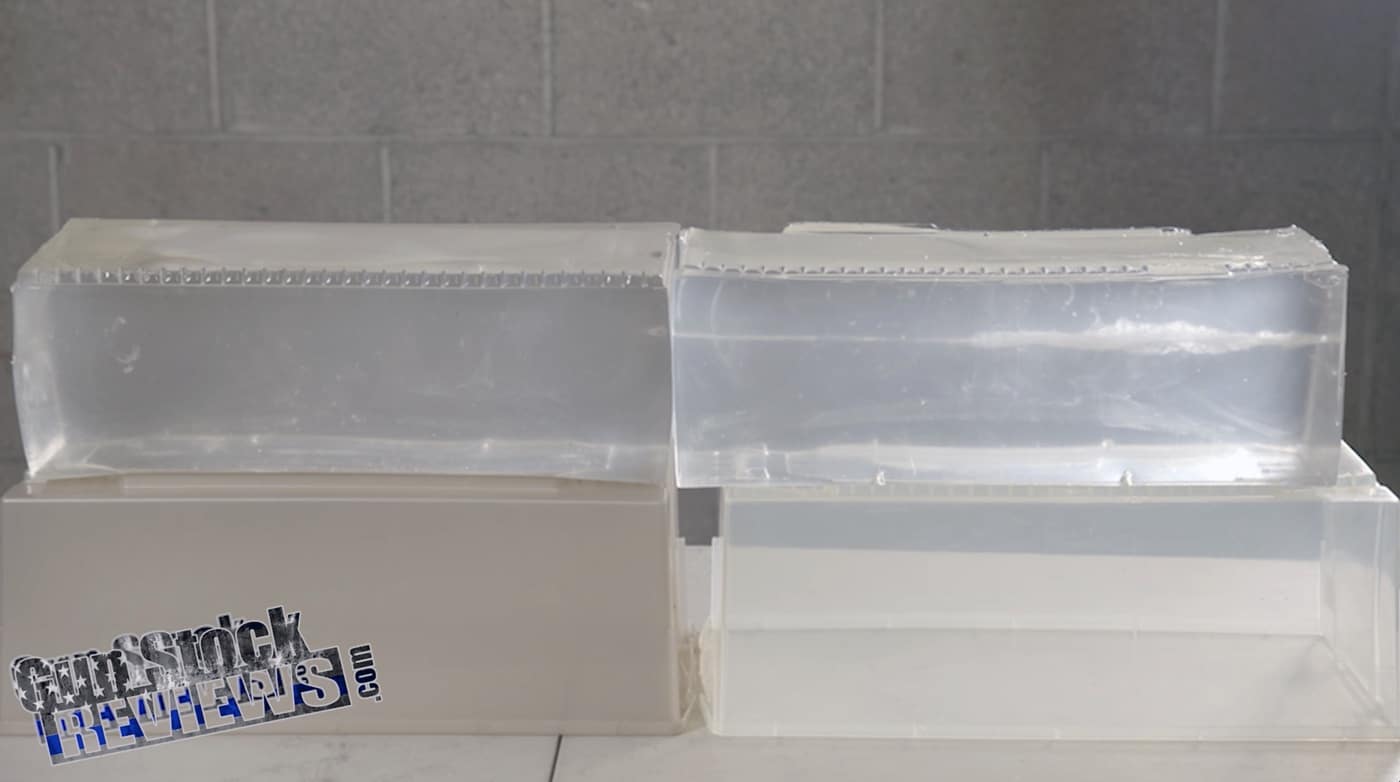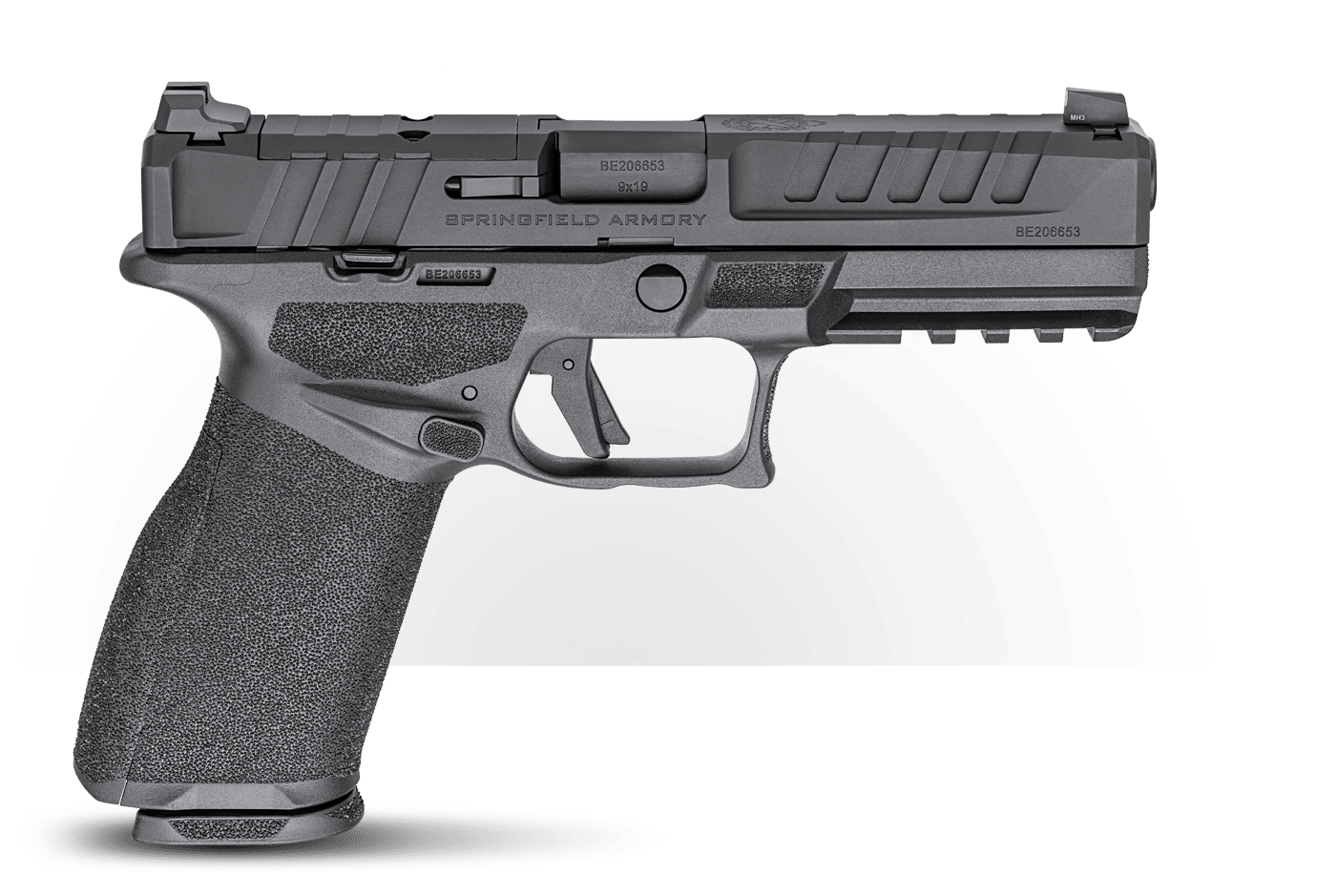Speer Gold Dot G2 9mm Review

In this review of Speer Gold Dot G2 ammunition, author Yamil Sued tests the 9x19mm Parabellum 147-grain load. Designed for civilian law enforcement, the G2 is an evolution of the incredibly effective Gold Dot line of self-defense ammo. How does the new hollow-point bullet perform? That’s what the author sets out to discover. Ammunition was provided by Speer to the author for this article.
The search for a perfect self-defense round for everyday carry (EDC) is a seemingly never-ending one. My friend (who also happens to be a lawyer) told me he looks at what local law enforcement uses and issues. His take on it was that if it has been tested and approved for police duty, it’s good enough for him to use for self-defense. Now, obviously, that’s not intended as legal advice to you, the reader. But, it’s certainly an interesting anecdote.
Over the years, as a firearms journalist, I’ve had the opportunity to test a good sampling of the best defensive ammunition available to the civilian and law enforcement markets — which brings us to the subject at hand here today. Specifically, we are talking about the Speer Gold Dot G2 line of ammunition, previously only offered for sale to law enforcement but now available to legal armed citizens.
[Don’t miss Massad Ayoob’s article What Are Hollow Point Bullets Designed to Do?]
In particular, we are considering the 147-gr. G2 9mm loading. Is it as reliable, effective and accurate as they claim? Let’s find out.
Background on the Speer Self-Defense Ammunition
First things first, what is Speer Gold Dot ammunition? Speer introduced Gold Dot in 1991, hailing it as a revolutionary step forward in bullet design. Until that point, duty bullets were made of a lead core with a drawn jacket and hollow point nose cavity to initiate expansion.

Speer went in a totally different direction: They would fuse a pressure-formed lead core to a plated jacket. This design created a molecular bond between the jacket and the core, eliminating any risk of bullet separation. Speer named this process “UNICOR” construction. The bonded design also helps Gold Dot bullets retain weight and transfer energy effectively, even when fired through barriers.
With this offering, Speer set a new standard in duty bullet performance and helped usher in the age of bonded bullets.
Moving Forward
Now, what exactly is the Speer Gold Dot G2? Speer chose a totally different bullet design for these G2 projectiles. The big difference from the traditional hollow point design of the Gold Dot is that the G2 bullet features a shallow cavity in the nose of the bullet filled with durable elastomer.
Now you might ask, what is elastomer? According to Brittanica, elastomer is any rubbery material composed of long chainlike molecules, or polymers, that can recover their original shape after being stretched to great extent. Hence the name elastomer, from “elastic polymer.”

This elastomer prevents barrier materials from filling the nose cavity of the bullet, which, in turn, may inhibit expansion. This provides more consistent performance through tough barriers.
The simplest way to describe this bullet design is that the G2 keeps things like plywood from filling the hollow cavity. At its simplest, it prevents that hollow point from getting plugged. Also, fissures cut into the bullet cause the G2 to expand reliably and transfer energy effectively while maintaining straight-line penetration once the projectile does begin to open.
This is a very interesting design. In the past, I’ve seen projectiles that get plugged up with barrier material prevent the bullet from expanding, resulting in overpenetration. In other cases, I have seen projectiles prematurely expand upon hitting a barrier, causing under-penetration. Clearly, this is a tough needle to thread, but it looks like Speer might have cracked the code.
Testing the Gold Dot G2 on the Shooting Range
Okay. Enough theory and tech talk. Let’s get on to the testing.
Given that the original purpose of the Speer Gold Dot G2 was as duty ammunition, I selected my favorite duty-sized pistol, the Springfield Armory Echelon. If you have read my previous articles on this pistol, you know that I love the Echelon and consider it to be one of the best pistols around. It pretty much fulfills all my handgun needs, and its versatility is unequaled.

I like to do my handgun tests in an indoor range as there is no wind, temperature fluctuations and weather issues to deal with, as well as offering stable shooting surfaces, etc. Like always, I did my testing at C2 Tactical in Scottsdale, Arizona.
My first test was to determine the velocity and kinetic energy that this load would provide. In this test, I used a Garmin Xero C1 Pro chronograph, which has quickly become one of if not the most popular chronographs on the market today. Its compact, lightweight design makes it an ideal addition to your range bag.
The chronograph result for the 147-gr. load was 1010.6 feet per second (fps), with a kinetic energy of 333 ft-lb. Speer advertises the load with a velocity of 1,020 fps, with a kinetic energy of 340 ft-lb.
Why is there a minor discrepancy between my results and the factory-provided results? First, no two chronographs will provide the same, exact results. Secondly, the barrel length of the test gun can affect results. And lastly, several environmental factors will affect chronograph results. Humidity, elevation, barometric pressure and ambient temperature are all variables that can affect results. And let’s be frank, my numbers came very, very close to the published ones.
The next step was a gel test. I fired one round into Clear Ballistics gelatin, which is claimed to provide a 90-95% approximation of ordnance gelatin. I use the Clear Ballistics gelatin because of its ease of use and reusability. Plus, refrigeration is not required.
The first round fired into the gel penetrated approximately 14.5”. This falls within the FBI requirements for a duty round. To get a baseline penetration value, I shot the round at a “bare gel block” without any added barriers like sheetrock, plywood, windshield glass or denim.

My third and final test was for accuracy. I fired six, three-round groups from 15 yards out of a Ransom International Multi Cal Steady Rest, which is a sturdy platform that stabilizes the handgun but still allows for my personal deficiencies to come through. This gives me an idea of how I personally fire the Speer Gold Dot G2 through the Springfield Armory Echelon.
My results were consistent. The smallest group was .825” while the largest group — which included a called flyer — was 1.5”. My average was 1.073”. If it weren’t for that pesky flyer, my average would have been under 1”. Clearly, the Speer Gold Dot G2 showed itself to be more than capable of very solid accuracy.
Reliability, Velocity and Penetration
While accuracy and gel-test results are an important part of any defensive ammo testing, the absolute most important parameter of performance is reliability. This is an absolute “must” for any ammunition intended for a defensive-style firearm. Over the course of my testing of the Gold Dot G2 ammo, I didn’t have a single stoppage. Every round I fired reliably fed, fired, extracted and ejected, consistently.

The velocity test confirmed how consistent this ammunition is. The extreme spread between the fastest and slowest shots was only 18.1 fps, which is quite impressive. My results were merely 9.4 fps slower than the factory-advertised velocity.
In the penetration test, 14.5” is a superb result for this kind of duty ammunition. The projectile expanded perfectly and penetrated as expected. I couldn’t have asked for a better performance.
Final Thoughts on the 9mm G2 Ammo
After performing all the testing, I’m very impressed with this ammunition. It’s accurate and reliable with superb performance. The question is, would I use this ammunition to defend my life? Absolutely.
In my humble opinion, Speer Gold Dot G2 now resides at the top of my list for high-performance ammunition, and I wouldn’t hesitate to recommend it to any other gun owner out there.
Editor’s Note: Please be sure to check out The Armory Life Forum, where you can comment about our daily articles, as well as just talk guns and gear. Click the “Go To Forum Thread” link below to jump in and discuss this article and much more!
Join the Discussion
Featured in this video
Read the full article here












